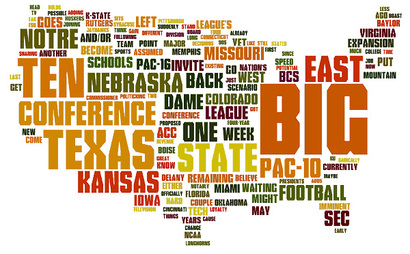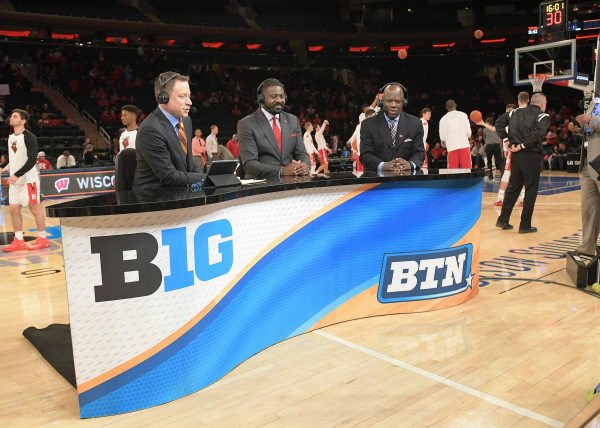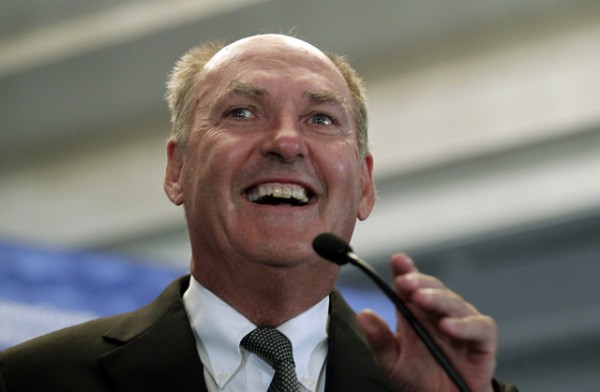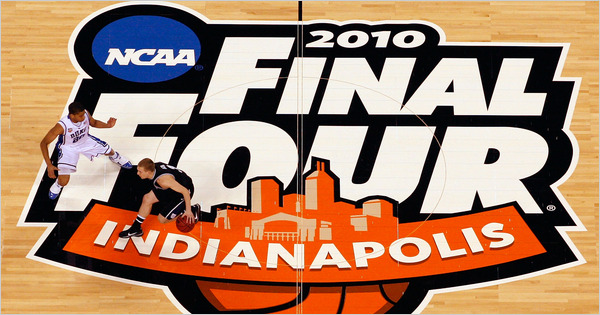Posted by rtmsf on September 20th, 2011
Andrew Murawa is the RTC correspondent for the Mountain West and Pac-12 conferences and a frequent contributor.
With this weekend’s out-of-the-blue bombshell that Pittsburgh and Syracuse were leaving the Big East behind in order to accept membership in the ACC, the wave of conference realignment that is sweeping the nation has reached critical mass. Even with last year’s moves turning the Pac-10 into the Pac-12, adding a twelfth team to the Big Ten (among other things), and this summer’s talk of Texas A&M bolting for the SEC, there was still a chance that all of this would settle down and we’d be looking at a conference landscape that mostly looked pretty similar. No more. While the Big 12 has been on a death watch for weeks now, all of a sudden the Big East has jumped its place in line and the conference is scrambling to maintain some sense of order while its member institutions look for soft landing spots. And with A&M to the SEC seemingly an inevitability, and with Oklahoma and Oklahoma State at least (if not Texas and Texas Tech as well) likely headed to the Pac-(fill-in-your-choice-of-numbers-here), the era of superconferences appears to be upon us. So, before things change again, let’s take a quick look around the nation at the conferences as they stand today, how they could change tomorrow and how that will effectively alter the college basketball landscape.

courtesy: The Football God
Big East
Today: TCU joins the conference next season (although apparently TCU and the Mountain West have had a conversation or two in recent days about how good they had things before the Big East got in the way), with Pittsburgh and Syracuse as of now bound to the conference for this year and the next two (with buyout negotiations likely still to be considered), putting the league at 17 basketball teams (nine in football) for 2012-13 and 2013-14, then down to 15 (seven in football) starting in 2014-15.
Tomorrow: Those numbers above are assuming that the ACC doesn’t snap up Connecticut and Rutgers (the two most mentioned names) and West Virginia isn’t able to find safe refuge as the 14th member of the SEC. In short, football in the Big East is in severe trouble, as are some of the historic rivalries in one of the nation’s premier college basketball conferences. If the ACC picks off a couple more Big East football programs, the conference has to start over more or less from scratch, with Louisville, South Florida and Cincinnati left scrambling for a home. If there is a way for the Big East to stave off football extinction, it is likely at the hands of the death of the Big 12. If Oklahoma, Oklahoma State, Texas and Texas Tech take up with the Pacific Coast, maybe the Big East snaps up Kansas, Kansas State, Iowa State and Missouri, and can carry on as a (hopefully) rebranded league.
Basketball: Nevertheless, there could still be a strong basketball conference here, regardless of what happens to Big East football. If Georgetown, Villanova, St. John’s, Marquette, Seton Hall, Providence, DePaul, and Notre Dame want, they could maintain a pretty solid eight-team conference among themselves, (provided ND isn’t somehow pressured into joining the Big Ten), or even snap up a handful of teams from the Atlantic 10 (Xavier, Dayton, St. Joseph’s, etc.) and carry on that way. Still, while hoops fans can console themselves with the prospect of North Carolina, Syracuse, Duke and Pittsburgh matching up with each other on Semifinal Saturday of the ACC Tournament, the sad fact is that the spectacle that is the Big East Tournament at the Garden is about to take a major hit.
ACC
Read the rest of this entry »
| randomness
| Tagged: acc, alabama, arizona, auburn, baylor, berkeley, big 12, big east, big ten, boston college, colorado, conference realignment, frank haith, georgetown, jim delaney, john swofford, kentucky, louisville, maryland, memphis, mike slive, missouri, pac-12, pittsburgh, sec, st johns, stanford, syracuse, texas, texas a&m, ucla, usc, utah, virginia tech
Share this story















































